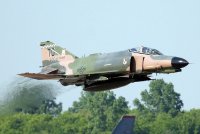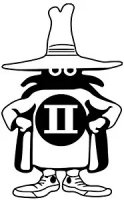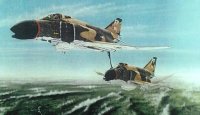OneManGang
Senior Member
- Joined
- Sep 7, 2004
- Messages
- 2,036
- Likes
- 9,671
Tennessee vs The Maxims vs Notre Dame - 1990
a/n: I was actually at the game. I found a video of the game on a Youtube channel called “Vintage Orange” with John Ward's call. Hie thee over, etc. Any quotes from Ward are from that video.
DATE: 10 November 1990
PLACE: Neyland Stadium
ATTENDANCE: 97,123
FINAL SCORE: UT 29 Notre Dame 34
It can be argued that we pay presidents of these United States, when all is said and done, to make two or maybe three really important decisions over the course of a four-year term. So it is with college football. We, the living fans, cough up money for tickets, lukewarm “cold drinks,” and the opportunity to sit in the midst of 100,000 of our closest sweaty friends on hot days. We also sit through boring games (I'll take Bowling Green for $600, Alex) or worse through debacles like the 2020 season. We don’t come back time after time because of all that. We do it for games like this contest many years ago between the Vols, ranked #9 in the country, and the #1 ranked Notre Dame Fighting Irish.
Both teams were loaded with future NFL talent.
Let's look at the Vols. Mind you, we are now accustomed to being happy if one or two Vols get drafted and there have been a couple of years recently where UT was skunked. Not so in 1990. Note: these are just the STARTERS! All are 1991 picks unless otherwise noted.
Offense: LT Charles McRae – 1st round Tampa Bay; LG Tom Myslinski - 4th round Dallas; RT Antone Davis – 1st round Philadelphia; FB Greg Amsler – 8th round Phoenix; RB Roland Poles – 10th round San Diego; SE Carl Pickens – (92) 2nd round Cincinnati; WB Alvin Harper – 1st round Dallas; WR Anthony Morgan – 5th round Chicago; WR Vince Moore – 11th round New England.
Defense: RDT Chuck Smith – (92) 2nd round Atlanta; LLB Darryl Hardy – (92) Atlanta; MLB Shon Walker – Toronto (CFL); CB Jeremy Lincoln – (92) Chicago; FS Dale Carter – (92) 1st round Kansas City.
For the 1992 NFL season Carl Pickens and Dale Carter were both named as Rookies of the Year, offensive and defensive, respectively.
Should we laugh? Cry? I don't know. And this was before the REALLY talented teams of the late 1990s!
For their part, the Irish featured Ricky Watters, Rick Mirer and Raghib “The Rocket” Ismail on offense and Chris Zorich and Mike Stonebreaker (one of the great football names, no?) on defense just to name a few. Oh, and on the bench but seeing playing time was a freshman fullback named Jerome Bettis.
So, boys and girls, the stage was set. It was a November day in East Tennessee, cool but not cold. It had rained earlier but that had cleared out. The University of Tennessee Volunteers were playing the University of Notre Dame Fighting Irish at Neyland Stadium. It was going to be Lou Holz versus Johnny Majors. The Legend of Rockne against the Ghost of The Gen'rul. The Notre Dame Victory March versus Rocky Top. The Golden Dome versus the Power “T.” Touchdown Jesus versus The Spirit of The Hill. Both bands, steeped in tradition and pride, put on outstanding shows at half. There was no amped-up “Johnny-Hop” this day blasting from the loudspeakers as the respective bands provided the musical accompaniment with Bobby Denton doing the PA honors. Just as God intended it.
It simply doesn’t get any better.
The game did not disappoint. The throng in Neyland that evening were treated to six lead changes and a combined 924 yards of total offense.
As the band formed the giant “T,” the incomparable George Bitzas sang “Fight Vols Fight!” And as the Vols stormed onto the field, John Ward intoned over the Vol Network to what was known as the Statewide Stadium, “Wherever you are, IT'S FOOTBALL TIME IN TENNESSEE!”
Notre Dame got the opening kickoff but was stymied by Tennessee's defense and punted. On the ensuing possession, Tennessee drove down to the Irish 29 but could go no further. A 46-yard field goal by Greg Burke gave the Vols a 3-0 lead.
On their next possession, the Irish struck back with a 59-yard touchdown strike from Rick Mirer to Rodney Culver. Tennessee then drove deep into Notre Dame territory but couldn't finish and settled for another field goal by Burke. Both defenses dug in and the Vols were unable to score further but held Notre Dame to a 2nd quarter field goal to make the score at half 10-6.
Tennessee had the ball as the first half ended. The Vols had the ball just across mid-field with 4 seconds left. Andy Kelly dropped back but ended up throwing a 10-yard out route. John Ward made a remark about expecting a “Hail Mary” on that play and then said, “I doubt that Hail Marys work … against Notre Dame!” CLASSIC!
Tennessee took the kickoff for the second half and moved smartly down the field finishing with an 10-yard run by Tony Thompson into the checkerboards. Score UT 13 ND 10.
Notre Dame responded on their ensuing possession when Mirer handed off to Ricky Watters who scattered the Vol defense like so much monkey sh*t and streaked 66 yards for a touchdown. UT 13 ND 17.
The second half featured no finesse or tactical skill by either side. It was like a “Rocky” film where both sides just kept throwing haymakers.
Tennessee then got the ball and Andy Kelly found Alvin Harper in the end zone for a 39-yard touchdown strike. Harper had to wrestle the ball away from an Irish DB who was draped all over him. UT 20 ND 17.
On Notre Dame's possession, they drove down the field to the Tennessee two before fumbling the ball. The Vols then were only able to move out to the nine and had to punt – directly to Ismail. He returned the ball deep into Tennessee territory but UT's defense stiffened and held the Irish to a field goal which opened the fourth canto. UT 20 ND 20.
Tennessee then drove to the Notre Dame 29 before stalling and Greg Burke nailed a 45-yard field goal. UT 23 ND 20
There was an exchange of punts before the Irish got their offense going and Watters scored on a 10 yard run. UT 23 ND 27
Tennessee was driving when Kelly threw an interception and set Notre Dame up on its own 48. They drove to the Tennessee 45 when …
from my perch in the South End Zone Upper Deck, I had a perfect view right down the East hashmarks and sideline. Myself and those around me had wondered just what all the hype was about Ismail as the Vols had him bottled up all night. We were about to get enlightened.
Mirer handed off to Ismail off-tackle, there was a pile of Orange and Irish there so he bounced it to the right. An Irish receiver blocked down on the Vols' cornerback and suddenly a lane opened right down East sideline. To me it seemed that Ismail planted his right foot to turn and the next time his foot hit the ground he was in the end zone 44 yards away. I have seen a lot of football in my years but I have never witnessed a human being with that kind of acceleration. Myself and my colleagues all sat there open mouthed and said, “Oh!” UT 23 ND 34
Time left: 3:23.
The Vols refused to yield. Kelly led them down to the ND 23 and then rifled a pass to Alvin Harper in the end zone. The Vols went for two but the pass sailed through Vince Moore's fingers. UT 29 ND 34
Time 1:44.
Greg Burke came in and hit a picture perfect onside kick that bounced high and into the hands of Carl Pickens. The Vols were in business and the crowd was going nuts. Tennessee dinked and dunked down to the Irish 23 with just under a minute remaining. Kelly rolled out to the right and Alvin Harper flashed free in the end zone. All 90,000+ stood as Kelly rifled the ball. Unseen by everyone, Notre Dame's Rod Smith shot in from the West sideline and intercepted the ball returning it to the ND 17.
And that, as they say, was that.
Final score UT 29 ND 34,
Yes, our Beloved Vols came up short. BUT, they were in position with a shot to win the game at the very end.
To this day, it remains the greatest college football game I have ever personally witnessed.
*******
I still recall a day when I was 12 or so and working in our garden when one of these beasts went roaring by at about 500 feet or so.

It was the coolest thing I'd ever seen.
It was, of course, a McDonnell-Douglas F-4 Phantom II.
When one thinks about the iconic fighters of the mid-1960s to the 1980s only one plane comes to mind.
Phantom pilots dubbed it The Rhino or Double Ugly or “The World's Largest Distributor of MiG Parts,” but if you asked, it's the plane they'd rather go to war in over any other.
And a beast it was. The Phabulous Phantom was 63 feet long with a wingspan of 38 feet 5 inches. But that doesn't begin to describe her. Not at all.
The F4H Phantom II first rolled out in late 1958. It was designed as a carrier fighter. After a couple of years of testing it was approved for production. Later re-designated the F-4, It entered Navy squadron service in 1961.
Sitting on the ground, the F-4 was nothing if not unprepossessing. Its nose and horizontal stabilizers both drooped down while its wing tips swept up. It appeared to the casual observer that its designers had only a nodding acquaintance with the conventions of aerodynamics. That drooping nose, though, held the absolute best radar system ever put into a fighter at that time. Better yet, buried in the fuselage were a pair of GE J-79 afterburning turbojets producing 17,500 lbs of thrust each that could drive the big fighter well over Mach 2. The rate of climb was a sizzling 40,000 ft per minute. She was armed with 4 AIM-7 Sparrow III radar missiles and four AIM-9 heat seeking Sidewinders. And, once in the air, the F-4 was the very picture of elegant lethality.
The U.S, Air Force had been watching the Phantom's development with a great deal of interest. When the Navy began hanging bombs on the things, the Air Force moved. The initial production version, the Navy's F-4B, was given a new coat of paint and was christened the F-4C. The Air Force was delighted with their new fighter.
McDonnell Douglas rolled out a whimsical trademark character for the Phantom, dubbed “The Spook.”

In the end over 5,000 F-4s were built.
How successful was it?
Well, by 1971 the F-4 was the primary front-line fighter/bomber with, (takes a deep breath) the US Navy, the US Marine Corps, the US Air Force, the RAF, the Royal Navy Fleet Air Arm, the Royal Australian Air Force, the German Luftwaffe, the Spanish Air Force, the Imperial Iranian Air Force, the Republic of Korea Air Force, the Japanese Air Self Defense Force, and the Israeli Air Force.
One thing all of those 5,195 Phantom IIs shared was a beefy tail hook, dating from its nautical origins.
On 30 June 1989, General Chuck Horner, Commander of the 9th Air Force and CENTCOM Air Forces, pinned Silver Star Medals onto Lt. Col. Bob Pardo and Col. Steven Wayne. These medals were a long delayed recognition for acts of valor in the outraged skies over North Vietnam over two decades previous.
On 10 March 1967 Capt. Pardo and his back seater, Lt. Wayne, were flying an F-4C of the 433rd Tactical Fighter Squadron. The unit had been tasked with attacking the Thai Nguyen steel mill north of Hanoi. The steel mill was considered a tough target as the enemy had ringed the place with anti-aircraft guns also called FLAK after the German guns of WWII. The primitive bomb sights of the day meant that the Phantoms would have to come in low to hit the target – right into sights of the FLAK guns.
Pardo's plane was hit as it rolled in and came off the target leaking fuel. Another F-4, flown by Capt. Earl Aman and his rear pilot, Lt. Bob Houghton, was also hit badly. As the rest of the squadron high-tailed it back to Ubon Royal Thai AFB, Thailand, (following standing orders) the two crippled F-4s formed up to try to make it back on their own.
It was clear to Pardo that Aman's ship just wasn't going to make it. There was nothing below but rice paddies, no cover at all. If Aman and Houghton had to eject, they were certain to be captured if not killed outright. Pardo later recalled, "There would have been no possibility of evading capture. I thought, 'If there's some way we could get him to the jungle, he's got a fifty-fifty chance of getting out of this.'"
They climbed to 20,000 feet and set course for the Laotian border some 80 miles away. Right then, Aman's plane ran out of fuel and his engines flamed out. A powerless F-4 has the glide angle of a brick.
Pardo decided to try and PUSH Aman's F-4 as close to the border as possible.
He told Aman to jettison his drogue chute (used to slow the plane on landing) in hopes that the resulting flat surface would enable him to put the Phantom's nose in there. Unfortunately, the turbulence made that impossible.
Pardo took position below and slightly behind Aman and tried to think of something else. As he looked at the bullet riddled F-4 he saw a possible answer.
He told Aman to lower his tail hook. Pardo then brought his F-4 up and put the hook up against his windscreen. Aman's rate of descent slowed from 3,000 feet per minute to just under 1,000. However, the pressure from the 20-ton Phantom began to crack the plexiglass. Pardo pulled back and tried again, this time kissing the hook against the stout steel supports for the windscreen. That worked. However, the tail hook tended to wiggle a bit and contact was lost about every 30 seconds or so.
Bob Houghton recalled, “Kissed is the right word, If he so much as bumped the windshield, he would have had that tailhook in his face. We’re talking about glass here. It was phenomenal flying, nothing less.”
Right Stuff to the bone.
This aerial display of flying skill went on as the minutes and the miles crawled by.
About ten minutes into this dance, one of Pardo's engines caught fire. He hit the extinguisher button and shut it down. Pardo was determined now and carried on with one engine.
Ten minutes later, they were well inside Laos as Pardo's fuel began to run out. He pulled off and at 6,000 ft, both crews ejected and were picked up by American rescue helicopters and returned to Ubon.
Amon and Houghton were flying the next day – their target was the Thai Nguyen steel mill.
It was that kind of war.
As word of the “Pardo Push” spread, the prickly and controversial boss of the 7th Air Force, Gen. William Momyer, demanded that Pardo be court-martialed for not saving his own plane. No less a figure than Col. Robin Olds, Pardo's wing commander, intervened. After some heated discussion, he hammered out a deal where Pardo would not be officially rewarded for his act and the general would not push the court martial.
Chuck Horner was also a combat pilot over Vietnam and had heard the tale. He reopened the file and endorsed the medals.
As the coalition air forces took off for Operation Desert Storm, Horner told them, “No target is worth your life.”
********
So, how did the Vols do against The Maxims?
1. The team that makes the fewest mistakes will win.
Kelly really can't be faulted for that last INT as the Irish defender was literally on the sideline. Kelly simply didn't see him and neither did Harper. If there was a critical error it might better be found in the INT that set up Notre Dame's second 4th quarter score.
2. Play for and make the breaks. When one comes your way … SCORE!
The Vols took advantage of everything Notre Dame gave them. Both sides played nearly error-free so there were not many breaks to be had.
3. If at first the game – or the breaks – go against you, don't let up … PUT ON MORE STEAM!
Despite the loss, The Gen'rul would have been pleased as the Vols took everything Notre Dame threw at them and then, to take the “Rocky” analogy a bit further, got up from the turf, brushed themselves off and spat, “Ain't so bad!”
4. Protect our kickers, our quarterback, our lead and our ballgame.
Andy Kelly was 35 of 60 for 399 yards and 2 touchdowns. There were also the two interceptions, but all-in-all it was a sterling performance by the Man From Rhea County.
5. Ball! Oskie! Cover, block, cut and slice, pursue and gang tackle … THIS IS THE WINNING EDGE.
Tennessee shut down Notre Dame's passing attack for the most part holding the Irish to less than 100 yards passing, but then they turned to their stable of running backs who compiled 336 total yards and three touchdowns.
6. Press the kicking game. Here is where the breaks are made.
Greg Burke was absolutely flawless this night. Tennessee kept kicking short and “directionally” to keep the ball away from Ismail and it mostly worked, right up to the point that punter Joey Chapman shanked his last punt and set up the Irish for their first TD of the fourth quarter.
7. Carry the fight to Notre Dame and keep it there for sixty minutes,
Both teams gave 110% and left absolutely everything on the field. It was sad that one of them had to lose. HeadVol John Majors said after the game, “There was a great effort by both teams. They won despite what I consider a very good effort by us.” Lou Holz echoed Majors, “This was a classic game … a tremendous college football game. We deserved to win the game. Tennessee could say the same thing.”
The Irish retained their #1 ranking but not for long, losing to Penn State 24-21 the next Saturday. They went on to play in the Orange Bowl against Colorado where they came up short 10-9.
Tennessee took out its frustrations on Ole Miss in Memphis and then sailed on to claim an SEC Title. The Vols then defeated Virginia 23-22 in the Sugar Bowl in a legendary comeback on the final play.
Of course, the 1991 season featured what has passed into Vol lore as “The Miracle at South Bend.”
I REALLY want the Vols and Irish to renew this series.
The “Pardo Push.” by Steve Ferguson. (USAF)

Last edited:



